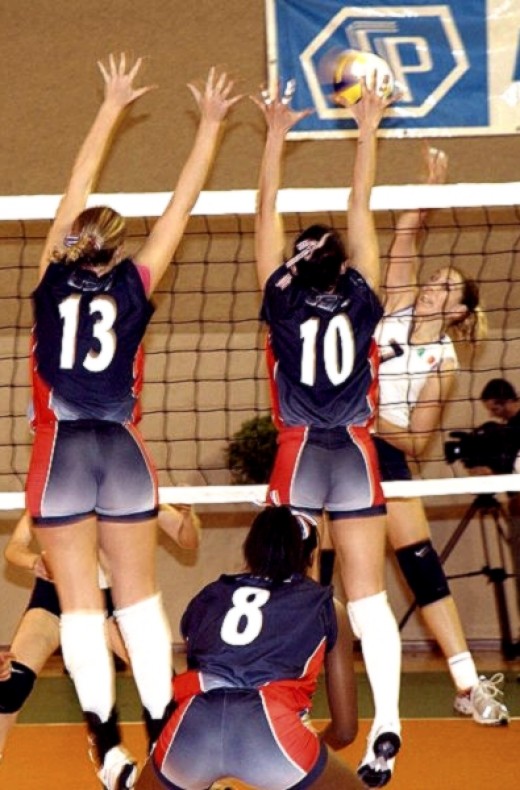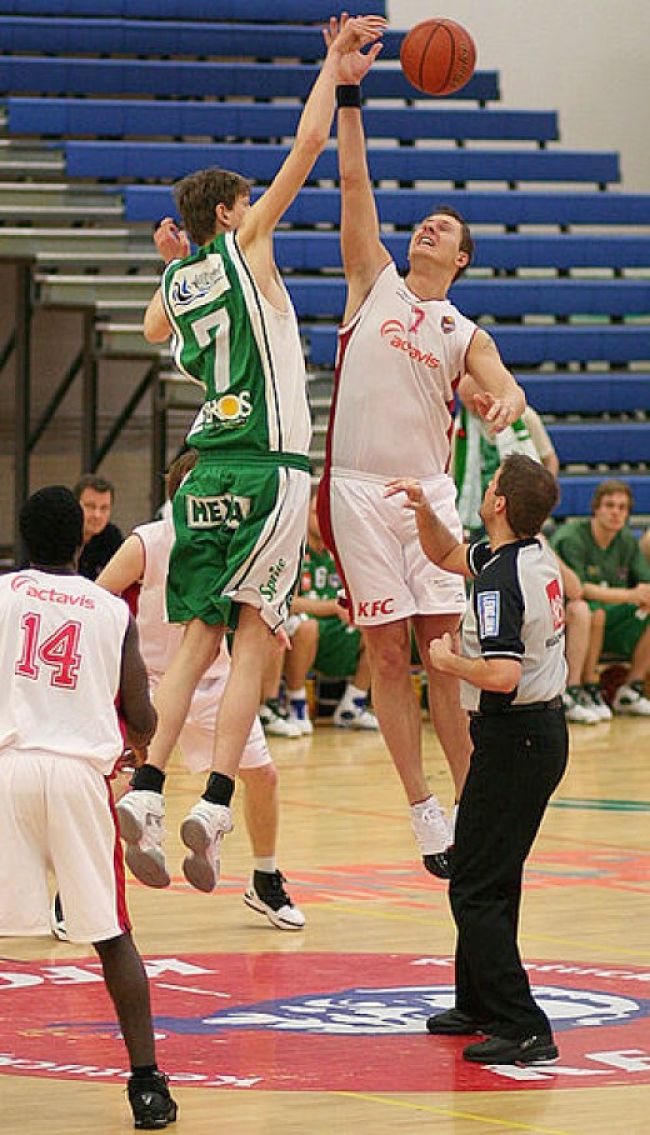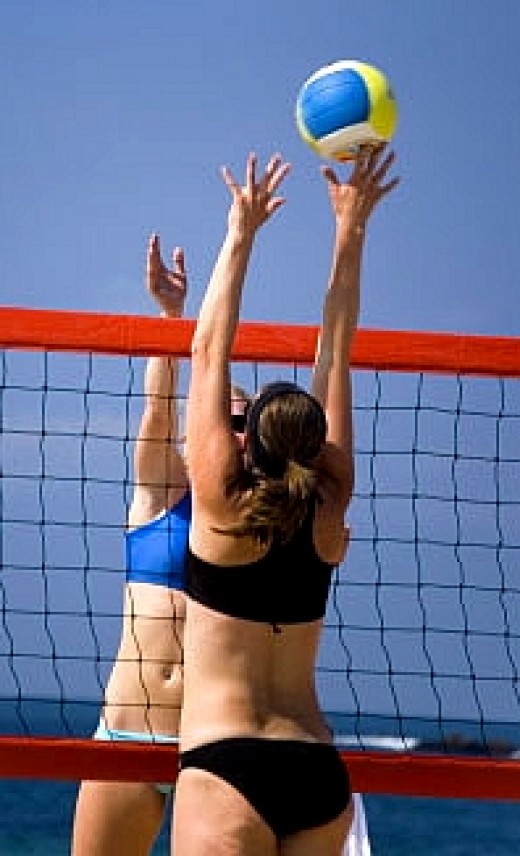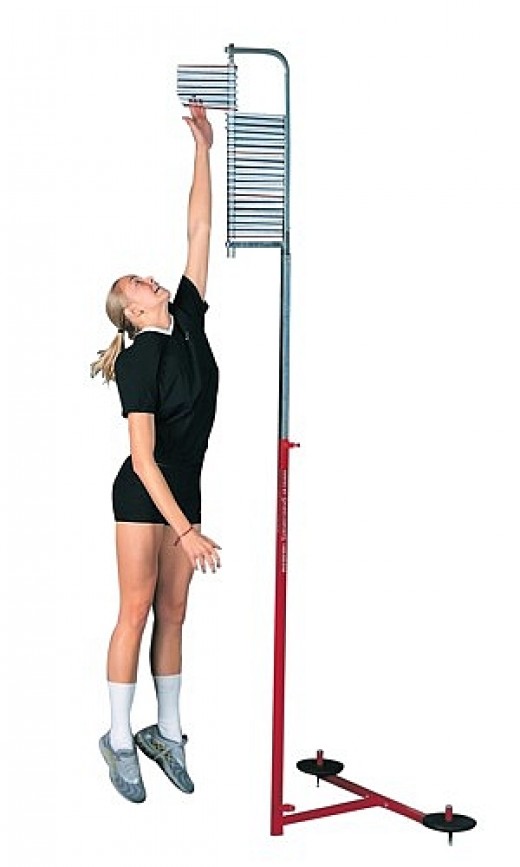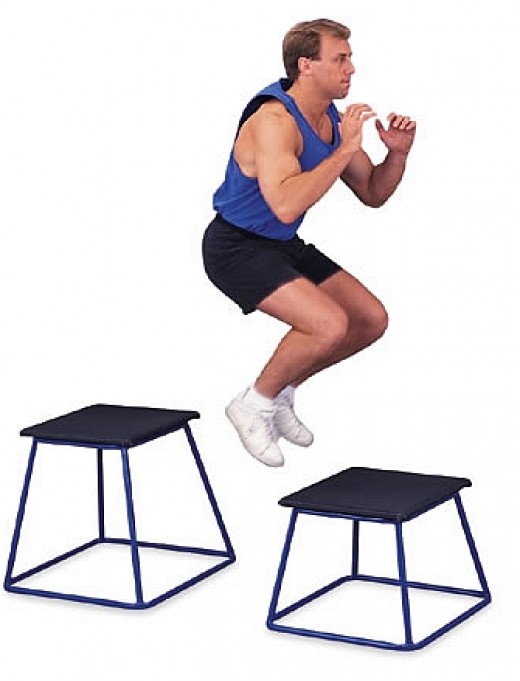How to Increase Your Vertical Jump - Best Exercises, Training Tips
While genetics is the major determinant of an individual's vertical jump height, with commitment and weight training you can increase your vertical jumping height so that you can out-jump most of your competitors or a least realise your maximum potential.With the right training program you can learn how to increase vertical jump performance by a significant amount. It will make a difference.
Lets face it most of your team mates or competitors or will have trained specifically to increase their vertical jump capacity and this is a way to gin an advantage.
There are three major kinds of strength training programs you can work on to increase vertical jump performance
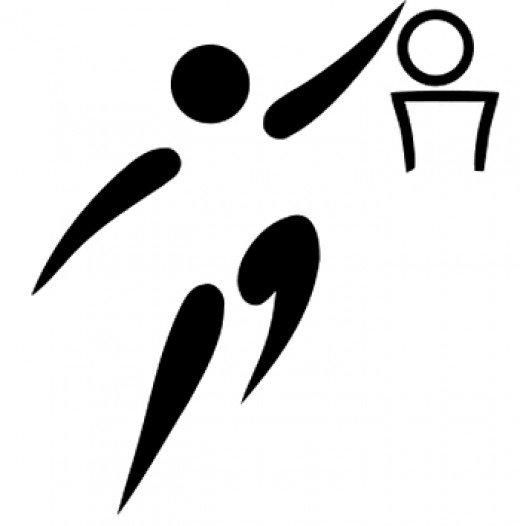
Traditional Weight Training
This method incorporates exercises such as leg presses, squats, lunges and toe raises. Generally quite Heavy weights (80-90% 1-RM) and a small number of repetitions (4-6) are used with the exercises to develop maximum muscle strength. This will increase you power to jump. However this traditional approach is probably the least effective.
Vertical jumping capacity is related to power which is a combination of Strength AND Speed. But a traditional weight training program with leg exercises only focuses on STENGTH to the detriment of SPEED. Generally as an athlete builds strength and the ability to lift more weight the speed decreases. So these methods tend to be ineffective.
Dynamic Weight Training
One good example of a dynamic weight training routine is the use of smaller weights with jump squats. It is best to use lighter weights (30% 1-RM), with more repetitions concentrating on explosive speed. The resistance is accelerated dynamically through the full range of the exercise.
Competitive weightlifting club and gym events, such as clean and jerk, power cleans and the snatch,are all good examples of weight training exercises that are dynamic. Success with these movements requires a lot of dynamic speed. During training the athlete develops the power to lift more weight, but the speed component has to be maintained otherwise the lifts will not be successful.
This is exactly what you want to improve you vertical jump which requires developing the combination of power and speed. However, most dynamic weight training programs are complex and generally require an experienced coach and high quality facilities.
Plyometric Training
Plyometrics is the most effective and widely employed training method to enhance vertical jumping performance. It transcends the junction between strength and speed. Plyometrics refers to exercise techniques that trains muscles to develop maximum force very quickly and explosively. The method works by loading muscles with a stretching or lengthening (eccentric) action, followed straight away by a shortening (concentric) action. This technique works because a muscle that is pre-stretched before contracting, contracts with greater force and more rapidly. The classic way that demonstrated this is a 'dip' or crouch just before to a vertical jump. This stretches the muscles used for the jump producing an enhanced and faster leap.
There are two explanations of why this occurs:
Mechanical Explanation - The idea here is that elastic energy is stored in the muscles and tendons supplementing the pulling power of the muscles. This stored energy is released adding to the muscle action. Its similar to a spring which is stretched creating a force to return to its original position.
Neurophysical Explanation - The idea here is that the muscles have an in-built mechanism to prevent over-stretching and injury, that is known as the stretch reflex. This increases muscle action providing extra power.
By making use of the described stretch and spring-back shortening cycle, muscle movements can be trained to be more powerful and explosive. Plyometric training is designed to stimulate the elastic/stretch component repetitively in movements that resemble those in a vertical leap.
Research has shown shows that plyometrics training techniques can enhance performance in long jumping, vertical jumping, sprinting and various sprint cycling events. About three sessions a week of plyometric exercises such as counter-movement jumps, depth jumps, leg bounding and hopping etc. can improve vertical jump performance.
A combination of all three methods in an organised training regime is recommended to increase vertical jump performance.
